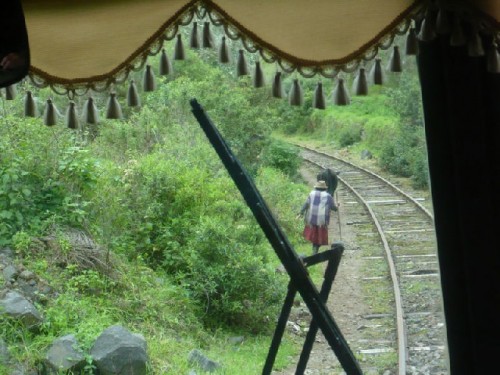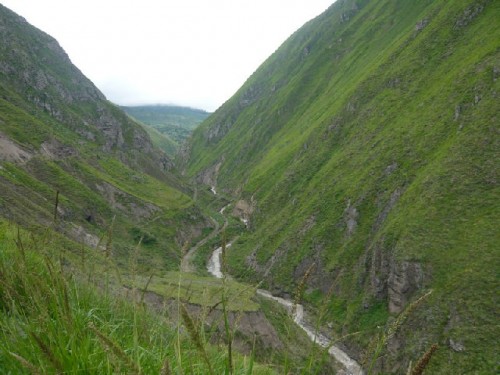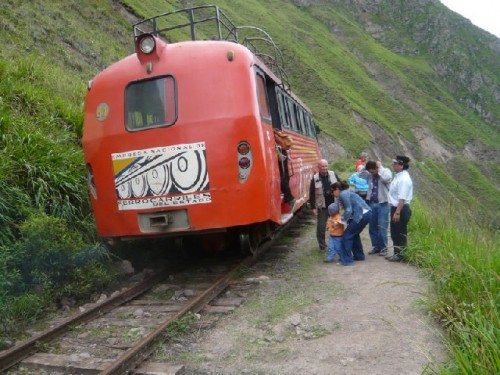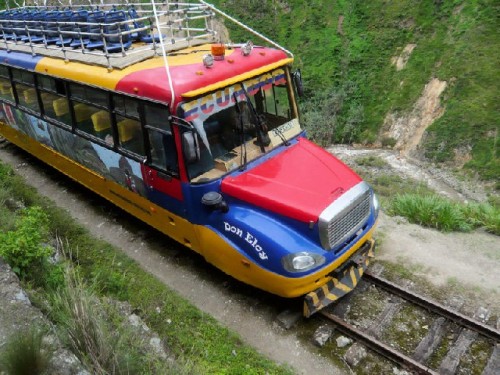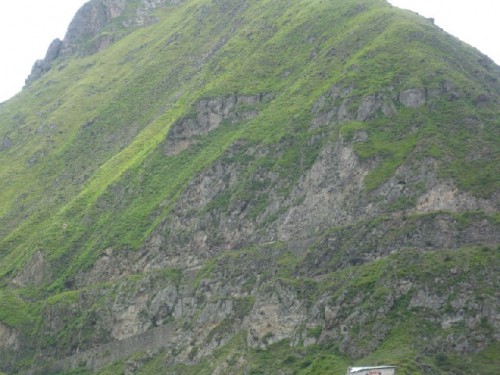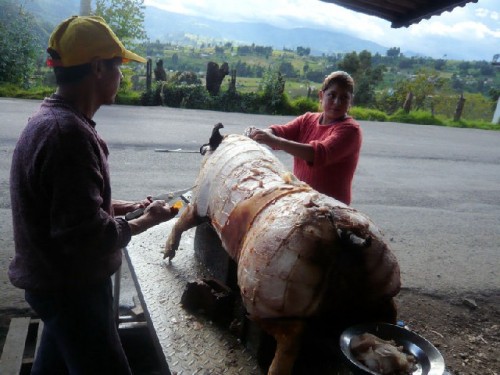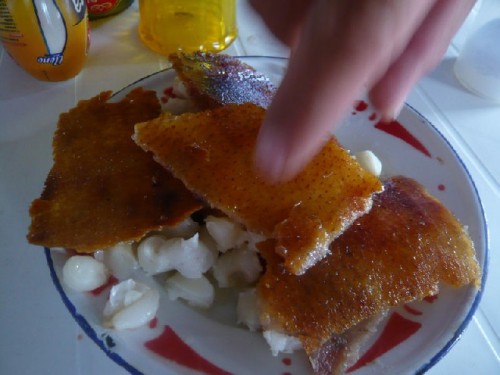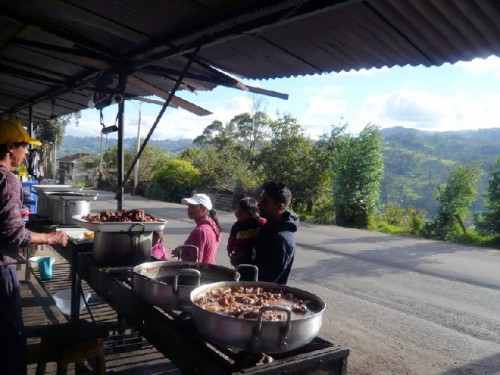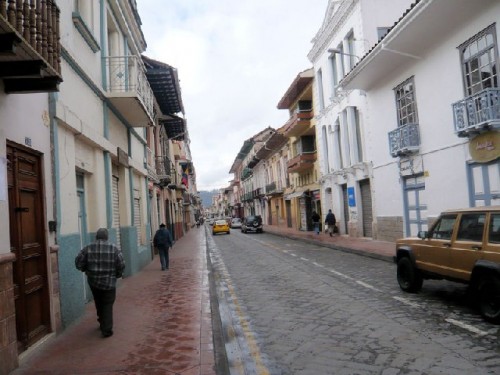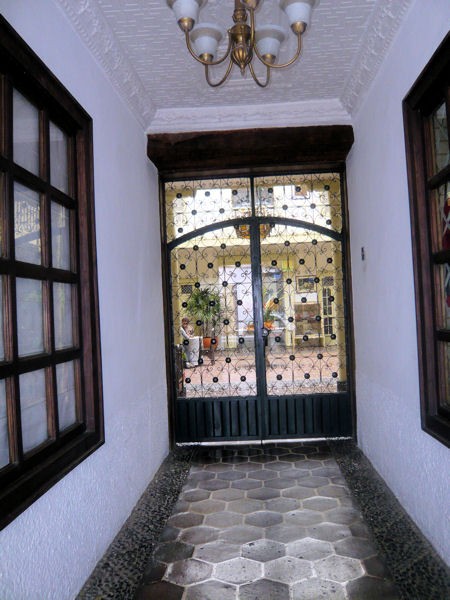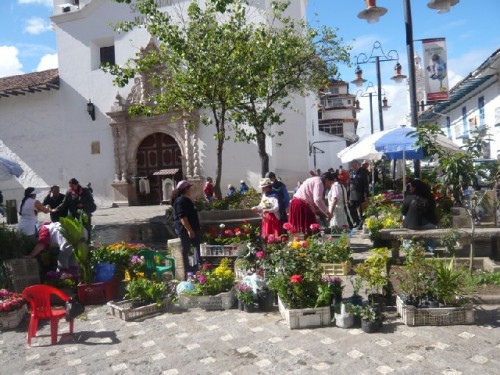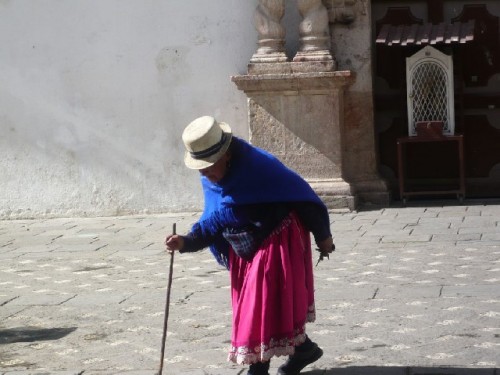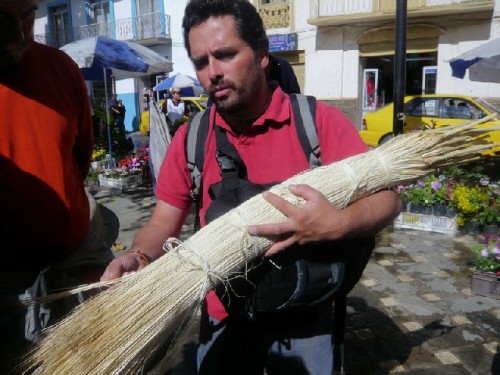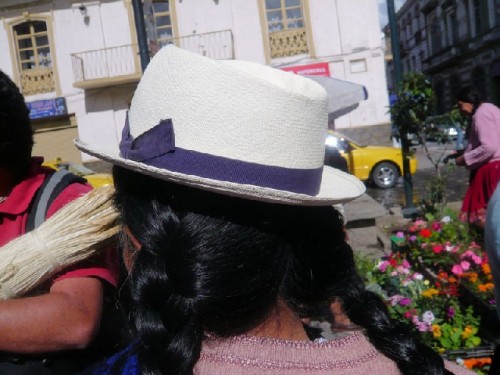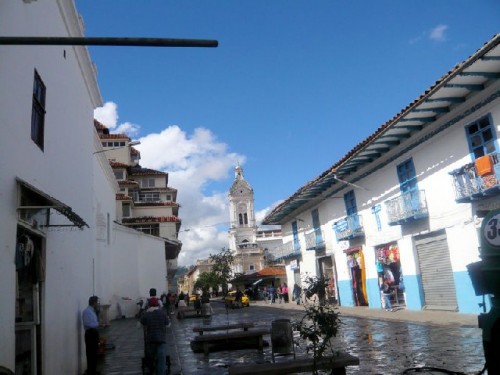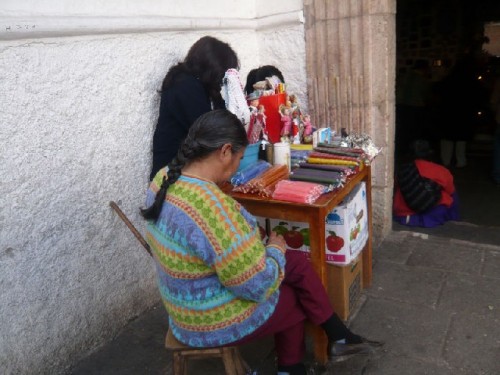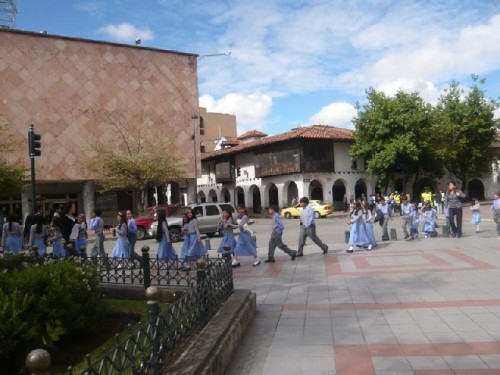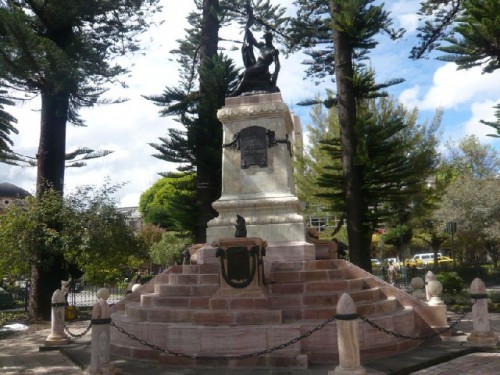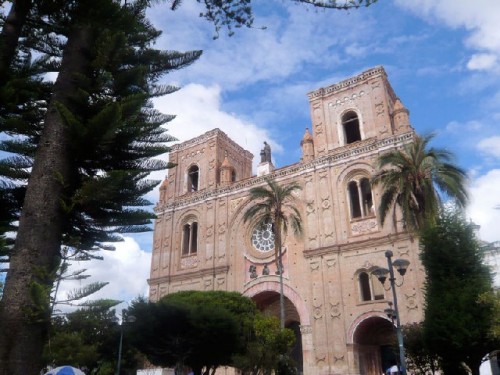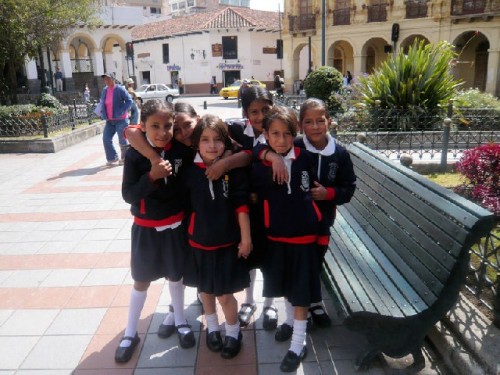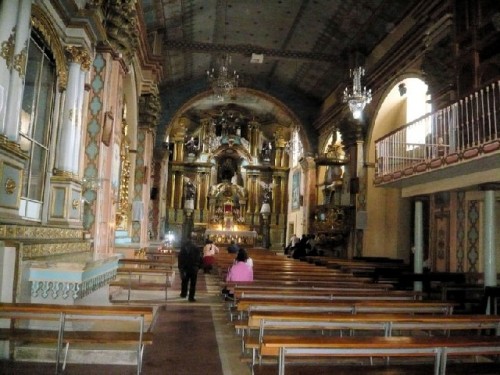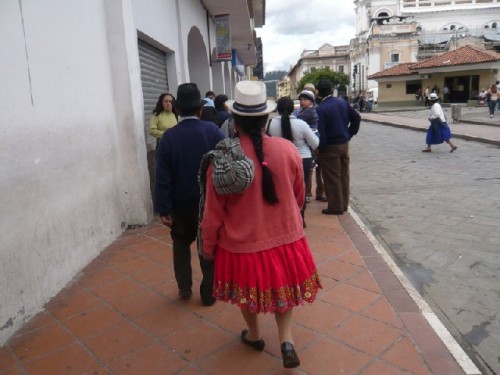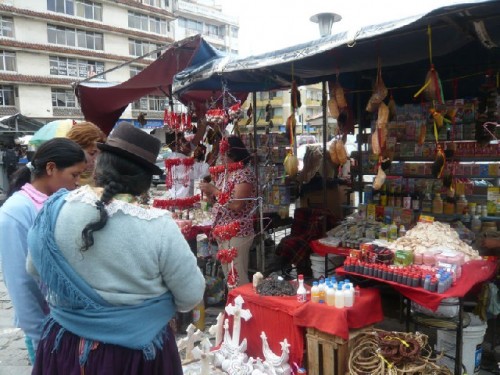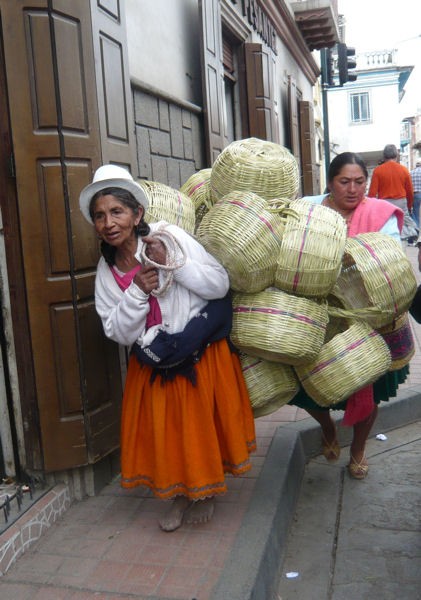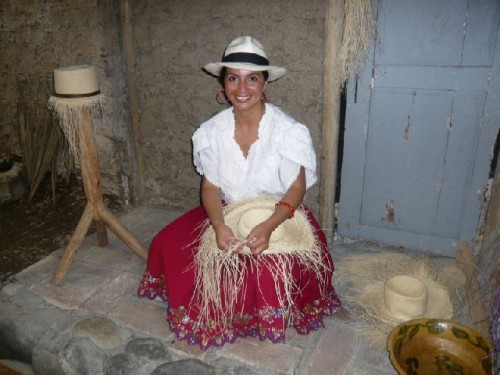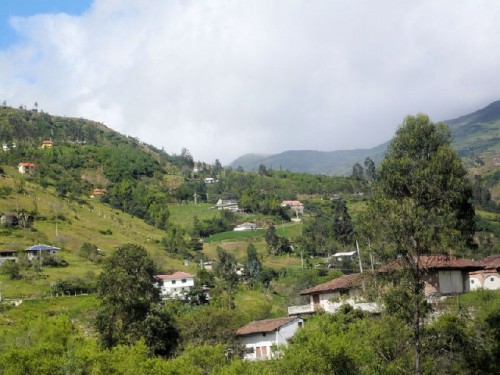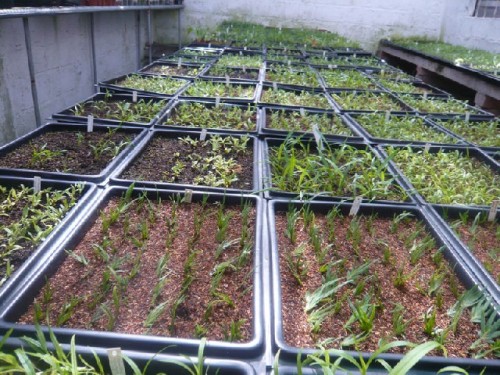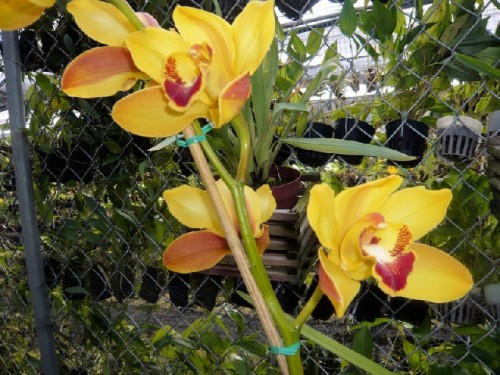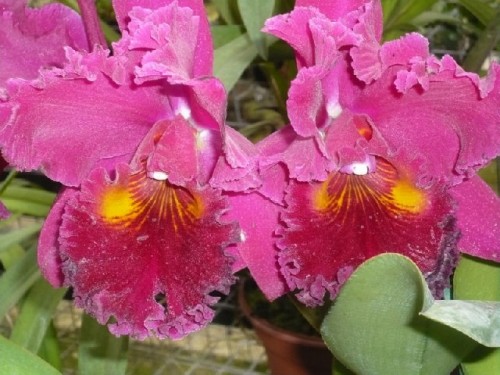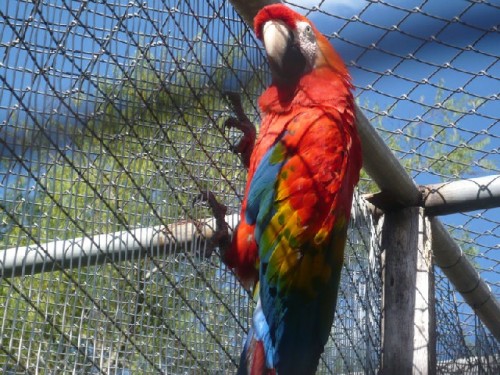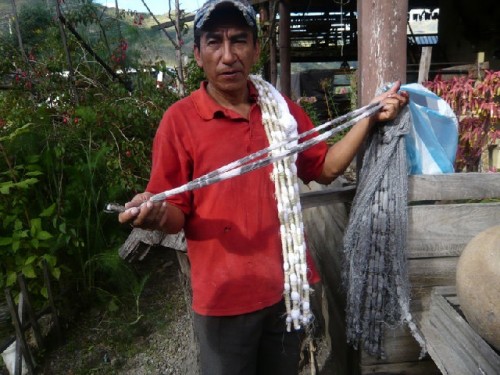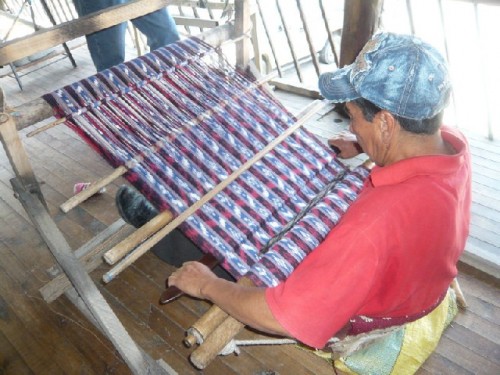Ecuador: Part Five
The Southern Sierra
By: Zeren Earls - Apr 04, 2009
Train travel in Ecuador began in 1910, when the Quito-Guayaquil line was opened with US technical and financial assistance, reducing to two days a former nine-day journey along a path impassible half the year because of rain. Due to its spectacular scenery, the most famed section of this journey is the "Devil's Nose", which starts in Alausi. An $8 round-trip train ride promises travelers an unforgettable experience.
As soon as the train pulled into the station in Alausi, we rushed in to get our choice of seats. Unfortunately, the customary sitting on the roof to ensure the best view is no longer allowed. During the next hour and a half, we had a precipitous descent, crossing spindly bridges over deep ravines via a switchback rail, by alternately advancing and backing down the vertical rock face as the train followed the tracks, which zigzag along the slope. While the view was spectacular, any of the boulders could have tumbled down on the tracks, which at times encountered animals as it followed the edge of the ravine. This journey was accompanied by an adrenalin rush, especially when we went backwards to switch tracks before going forward again. This was an experience not to be forgotten quickly!
Our return to Alausi was followed by a much deserved lunch at a local restaurant: quinoa soup with potatoes, beef and potatoes with thinly sliced avocado on the side, and flan for dessert. Then we were back on the bus, as we had a four-hour trip ahead to Cuenca, our next overnight destination. We drove through dense fog and stunning green vistas. Farm houses with geese and horses, and laundry under protective plastic on the roof, lined the road. It started to rain as we descended to Canar Province, home to wealthy farmers, as evidenced from multi-level brick houses with balconies and tile roofs. The owners are employed as migrant workers in the US and Spain.
As the sun came out, activity on the road and in the fields increased; trucks carried cement and oil; indigenas farmed in colorful skirts and white hats, waterproofed with pulverized corn to fill the gaps in the wool. Traffic slowed down at a pig stop; Roberto urged us to get out of the bus for this discovery. We were at a rather unconventional road side stand, where a woman was skinning a pig. Cascarita - torched pig skin - is a delicacy in the Andes. The crisp skin is served on boiled and salted hominy - white corn. Slices from a whole roasted pig are a popular snack. The owners of the family business we were watching kill and sell one 300-pound pig a day. Pork goes for $7 a pound, or $3 a plate.
The four-lane highway around Canar expanded to six-lanes as we approached Cuenca, with a population of 500,000, Ecuador's third largest city after Guayaquil and Quito. Densely built houses with tile roofs and brick apartment blocks crowded the mountain plateau. Passing a brick factory, we left the Pan-American Highway and took a perimeter road to get to downtown Cuenca. Busy streets, traffic lights and school children at bus stops signaled an urban core. Students attend school in either the morning or the afternoon session, which ends at 6 pm. Late 18th century houses, many under restoration, overlooked the river lined with trees. Skillfully negotiating the narrow streets of Ecuador's most important colonial city, a UNESCO World Heritage Site, our driver pulled up in front of the Inca Real Cuenca Hotel, our home for the next two nights.
Cuenca
Built as a residence in the early 19th century, the colonial two-story Inca Real Hotel featured an interior patio with a tile floor and potted plants. The spacious guest rooms opened onto the patio on the ground floor and onto a balcony with a carved wood railing and hanging plants over the patio on the second. The elaborate wrought iron front door opened onto a cobblestone street. This door was kept locked at all times, except when the doorbell was rung. After a buffet breakfast in the patio, we strolled to the town center.
Enjoying the sight of whitewashed buildings with huge wooden doors and ironwork balconies, as well as a skyline dotted with church domes and towers, we arrived at a public plaza overflowing with flowers and greenery. The town hall and cathedral faced the plaza, which featured a flower market. People read the morning paper on park benches; votive vendors crowded church entrances as many, including students in uniform, filed in and out for morning prayers. The top three professions in Ecuador are those of doctor, lawyer and priest.
An excursion to the countryside took us to Chordeleg for lunch and a visit to orchid gardens afterwards. Turning off onto a rough country road, we arrived at the Hosteria Ushupud, where we enjoyed lunch outdoors. My choices, always seafood given the option, were shrimp ceviche, sea bass from Ecuador's Pacific coast, "tree tomato" juice and "three-milk cake" for dessert. The guided tour of an orchid research center was a learning experience. Young orchids are kept in bottles for a few months with appropriate enzymes to aid their growth. During this time the plants are taken out of the bottles four times and checked for bugs. Then they go into small planters until they are big enough for outdoor planting. The gardens we visited had 4500 species of orchids: 2500 wild and 2000 hybrids.
The Cuenca basin is a major center for artisans, producing ceramics, Panama hats, baskets and ikat shawls to name but a few of the local crafts. We visited a weavers' workshop for a demonstration of the production of hand-woven shawls, called macanas. In the ikat technique, the threads are tied by fibers cut from plants. The design is established by the number and size of knots on the threads before they are dipped in baths of natural dye, such as brown dye from walnuts. To add a pattern, the threads are tied and dyed again. In the final stage, the threads are stretched on a back strap loom for weaving. To support the family-owned business, I bought a shawl with red and black patterns.
The visit to a Panama hat factory was yet another discovery. Panama hats acquired their English name when they were supplied in bulk to workers on the Panama Canal, but they have always been made in Ecuador. Locally called paja toquilla, the hats are named after the straw they are made of. The natural fiber belongs to the palm family. We watched artisans weave and mold the fiber into hats. The fineness of the weave determines the value of the hat. Coarsely woven hats sell for under $50; fine ones, which feel like silk to the hand, sell for over $100. A souvenir straw doll was my only purchase.
In the evening, we went to a restaurant in the central plaza to try typical local food. Dishes the group sampled were: egg drop soup, potato soup with melted cheese, beef topped with eggs (sunny side up), fried pork, stir-fried shrimp with vegetables, steamed tamale, and potato and avocado salad.
Cuenca is the intellectual and economic center of the southern Sierra, with a state university and many theaters and museums. The new Central Bank Museum sits above excavations of Inca walls. The pieces on display have been recovered from excavations at the site and include ceramic pots and ceremonial cups, anthropomorphic idols carved in sea shells, gold and silver pins to fasten ponchos or shawls, idols left as offerings at burial sites, and other pre- Colombian objects. In addition, the ethnographic collection highlights the diverse cultures of the inhabitants of the coast and the Andean foothills, as well as of the highland natives. The Pumapungo ruins around the museum include mortar less Inca stone walls. A panoramic view of Cuenca from Turi Hill was part of our morning excursion.
Lunch at El Mais on the Calle Zarca rewarded us with its historic setting, dating from 1830. The building was furnished with local antiques and crafts; hand painted images of corn and birds over sponge-washed walls enhanced its charm. As an appetizer, we enjoyed quinoata, made of hominy, quinoa, butter and cheese; goat stew, rice garnished with sliced avocado, zucchini and tomatoes followed; for dessert we had figs cooked in brown sugar and served with cheese.
Later on, we transferred to the airport for our 45-minute flight back to Quito. In-flight refreshments included banana chips accompanied by our choice of tropical nectars. Back in Quito, I quickly packed for our return flight to the US the next morning and went out for a final stroll in the vicinity of our hotel. I had barely taken a few steps when a fanciful ceramic turtle caught my eye in the window of an artisan shop. I walked into the shop, which, much to my delight also had the masapan figures I had seen on the walls of our hotel in Riobamba. These brightly dyed bread dough figures of humans and animals, unique to Calderon at the southern edge of Quito, are dried or baked, and finished with a coat of varnish. They are placed on graves as offerings to the dead on the feasts of All Saints and Day of the Dead. I was charmed by a llama decorated with pink roses. In addition, I bought a small bowl hand-painted in northern Ecuador, where artisans use human hair instead of brushes to create patterns of very fine lines on their creations.
Following dinner, Fulya and I went to bed early, as we had a 4:30 am wake-up call for our 7:40 flight to Miami. However, when we got to the airport, we found that our flight had been cancelled, leaving us with three options: to spend an extra night in Quito courtesy of American Airlines, to go stand-by on the next flight, or to fly south to Lima on LAN Peru and connect to their Miami flight. Reluctantly, we chose the third option, to guarantee our return home on the same day. Dressed to go to Boston, we arrived in Peru, where it was 80 degrees Fahrenheit. Feeling fortunate that we had had no similar delay on our outbound trip, we arrived home at midnight instead of 5pm, as originally planned. Despite the unexpected detour at the end, we had a wonderful time in Ecuador, which left me with unforgettable memories.

